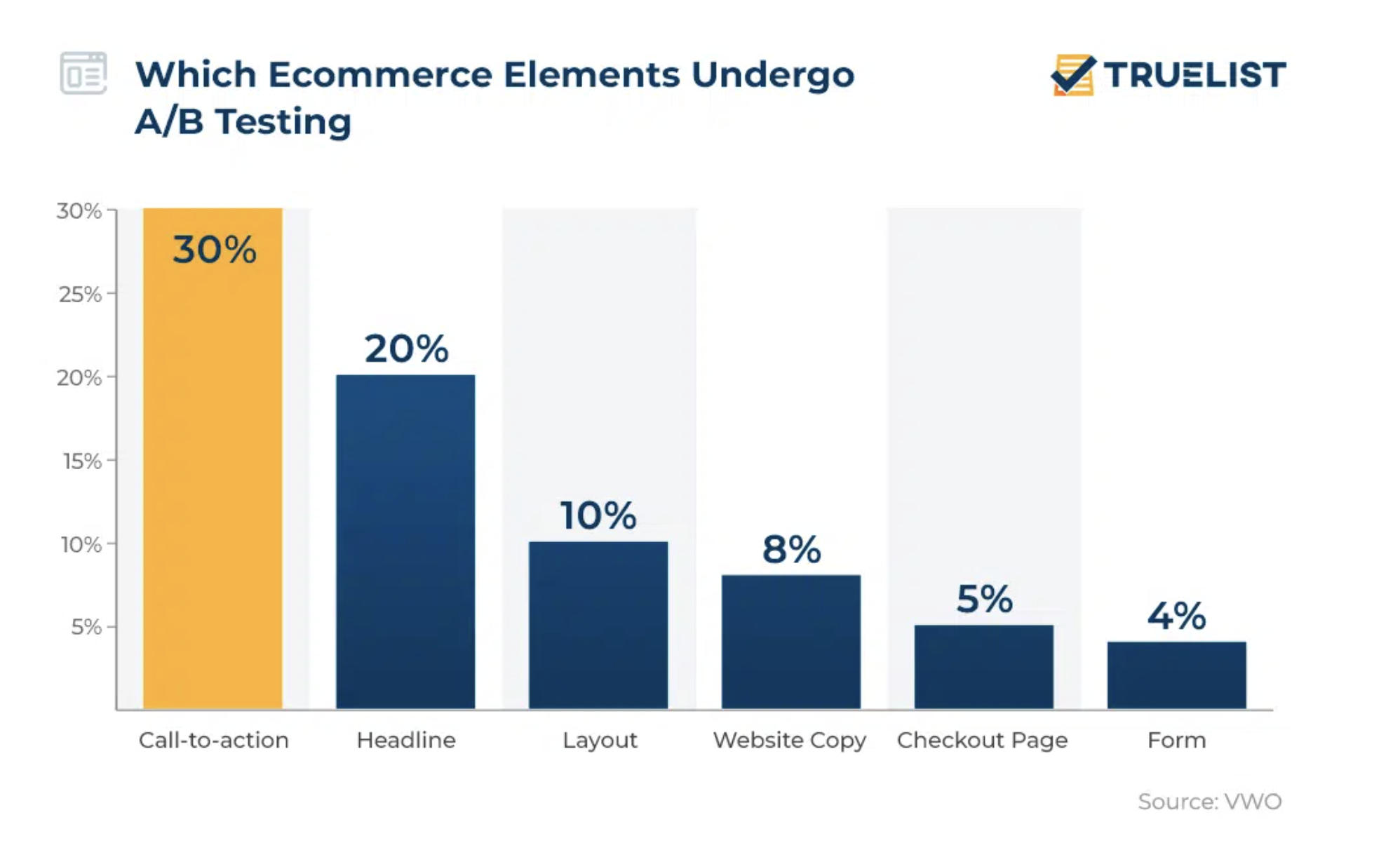Advertisers have been trying to divine what people will buy for decades. Marketers began taking a data-driven approach in the 1920s, testing the performance of different paper coupons. Today’s marketers rely on A/B testing of digital advertising assets. Trying different ad asset versions has been the cornerstone of data-driven decision-making for years.
A/B testing is powerful because it gives marketers unbiased data from real customers, not survey panels. As the online audience grew, digital marketers could run more tests faster while targeting audiences in unprecedented ways.
Artificial Intelligence (AI) is now emerging as another game-changer for marketers. For context, AI uses algorithms and machine learning to analyze data, recognize patterns, and make decisions.
Read on for an overview of how AI is revolutionizing A/B testing, making it faster, eliminating more guesswork, and ultimately improving results.
How AI is Changing Traditional A/B Testing
Today’s digital marketers are familiar with comparing two variations of an ad asset, such as a webpage, email campaign, app interface, or any other marketing asset. The goal is to determine which version performs better regarding a specific metric, such as click-through rates, conversion rates, or revenue.
A/B testing provides several of the following key benefits:
- Data-Driven Decision Making: A/B testing provides empirical data, allowing businesses to make decisions based on real user interactions rather than assumptions or intuition.
- Optimizing User Experience: By comparing different versions, businesses can identify elements that resonate better with users, improving user experience and customer satisfaction.
- Increasing Conversion Rates: A/B testing helps identify the most effective strategies to increase conversion rates, such as optimizing call-to-action buttons, form layouts, or product descriptions.
The chart below shows the most commonly tested assets.

Overall, AI enhances A/B testing automation, personalization, instant optimization, and the ability to juggle dozens of variables simultaneously. Here are some more details about how AI and A/B testing work together:
- Automated A/B Testing: AI algorithms can automate the process of A/B testing by continuously testing multiple variants in real time. Machine learning models can analyze vast amounts of data quickly, allowing businesses to adapt their strategies dynamically based on user responses.
- Personalized A/B Testing: AI enables personalized A/B testing by analyzing individual user preferences and behavior patterns. It can customize website content, product recommendations, or email campaigns for different segments of users, ensuring a tailored user experience that leads to higher conversion rates.
- Predictive Analytics: AI algorithms can predict which variations are likely to perform best based on historical data and user behavior patterns. This predictive capability helps businesses focus their A/B testing efforts on the most promising variations, saving time and resources.
- Real-time Optimization: AI systems can analyze user interactions in real time and optimize the user experience on the fly. For example, AI can adjust website layouts, modify content, or change product recommendations based on user behavior, ensuring continuous optimization without manual intervention.
- Advanced Multivariate Testing: AI can handle complex multivariate testing scenarios involving multiple variables and interactions. It can identify intricate patterns and correlations between elements, providing businesses with deep insights into user behavior and preferences.
By leveraging AI capabilities, businesses can optimize their marketing strategies and deliver highly personalized and engaging customer experiences, ultimately leading to improved conversion rates and overall business growth.
AI enhances A/B testing automation, personalization, instant optimization, and the ability to juggle dozens of variables simultaneously. Share on X
AI shines in data analysis, personalization, and adaptive responses, so let’s look closer.
Faster and More Accurate Data Analysis
Before digital marketing, marketers struggled to get sufficient data for high-quality samples. Now, the problem is the opposite. A significant challenge in traditional A/B testing is the sheer volume of online user behavior data marketers need to analyze to make good decisions.
AI excels at processing large volumes of data quickly and accurately. Machine learning algorithms can sift through massive datasets, identifying meaningful patterns humans might miss.
AI can also speed up real-time campaign decisions by generating variations. Take headlines, for example. In traditional A/B testing, marketing teams have to brainstorm and develop all the different headlines to test.
Today, AI can generate a set of headlines based on massive amounts of historical data in less than a few seconds.
Not only that, but marketers can set up all the variations they want to test simultaneously. AI will run tests and keep track of feedback on several variations at once.
AI algorithms can analyze incoming data in real-time, enabling marketers to adjust their campaigns on the fly. This agility ensures that marketing efforts align more closely with variations such as current trends and customer preferences.
Personalization and Targeting
Personalization is the key to capturing customer attention and securing repeat business for a healthy Customer Lifetime Value (CLV). A Salesforce study found that 70% of consumers say that “how well a company understands their individual needs impacts their loyalty.”
It turns out all that granular data from social media data mining is a double-edged sword. Yes, it allows marketers to create refined target audiences, but it also means that consumers are now used to seeing relevant content. Brands that can’t deliver personalized content risk looking out of touch.
The good news is that AI takes possibilities for personalization to the next level. AI algorithms can identify individual preferences and tailor content by analyzing user behavior.
AI-enabled personalization goes beyond addressing the user by their first name or simple demographics. It extends to adapting in real-time to deliver content and experiences that resonate with specific interests and needs. AI results should improve over time in the best algorithms as they continuously learn from user feedback during A/B testing.
AI also improves segmentation, allowing marketers to categorize their audience based on various parameters such as demographics, behavior, and preferences. One example is Sentiment Analysis, where AI analyzes social media posts, reviews, and customer feedback to gauge public sentiment. Refined segmentation creates a more personalized experience, enabling marketers to create highly targeted A/B tests.
By tailoring experiments to specific segments, marketers can optimize their campaigns for maximum impact, increasing the likelihood of conversions.
Adaptive Testing and Continuous Learning
Traditional A/B testing follows a linear process: create variations, conduct the test, analyze the results, and implement changes. AI allows marketers to test many variations simultaneously while tracking test results in real time. This dramatically speeds up the testing process and introduces the concept of adaptive testing and continuous learning.
Instead of static experiments, AI-driven A/B testing involves a continuous learning approach. Machine learning algorithms analyze ongoing traffic to the website, identifying emerging trends and patterns. This iterative process allows marketers to adapt their strategies in real-time, ensuring their campaigns are optimized continuously for the best results.
Automation also plays a crucial role in adaptive testing. Based on tests, AI algorithms can automate traffic allocation, ensuring the right audience is exposed to suitable variants. Intelligent traffic allocation optimizes the testing process, maximizing the impact of each experiment. Marketers can focus on analyzing results and deriving insights, leaving the repetitive and time-consuming tasks to AI-powered automation.
Moving Ahead
By leveraging the power of AI, marketers can gain a competitive edge, reaching their audience with personalized, targeted campaigns that deliver results. As you embark on your A/B testing journey, focus on understanding your audience, harnessing the capabilities of AI, and embracing continuous learning.
At Funnel Envy, we know that even though the promise of AI is promising. We also know the actual implementation raises the bar for complexity in tracking and reporting. Our FunnelEnvy customer data platform enables you to create a personalized experience that responds to your website visitors within milliseconds. Reach out today to get the conversation started.







